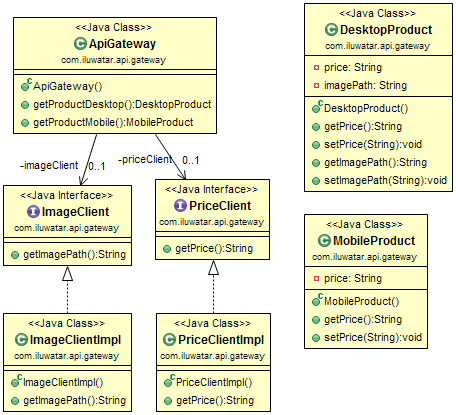* add state and callback pattern * add command and template-method pattern * add iterator pattern * add bridege and DI pattern * fix issue #1600 * add converter,proxy,visitor pattern * add caching,composite,delegation,dirty-flag,interpreter patterns * add dao and producer-consumer * add dto and provate class data pattern * fix #1646 png path problems * fix #1646 composite png path case problem * add abstract document pattern and version-number pattern * add ambassador pattern * add acyclic-visitor and api-gateway pattern * add abstract-factory pattern * add active-object pattern * add aggregator-microservices and arrange-act-assert pattern * update async-method-invocation pattern * add balking and business-delegate pattern * add bytecode and circuit-break pattern * update arrange/act/assert pattern problems * add csch pattern * add language code, correct pic path * #1805 update permalink Co-authored-by: Subhrodip Mohanta <subhrodipmohanta@gmail.com> Co-authored-by: Mike <admin@xiaod.info> Co-authored-by: Ilkka Seppälä <iluwatar@users.noreply.github.com>
layout, title, folder, permalink, categories, language, tags
| layout | title | folder | permalink | categories | language | tags | |||
|---|---|---|---|---|---|---|---|---|---|
| pattern | API Gateway | api-gateway | /patterns/api-gateway/ | Architectural | zh |
|
目的
API网关将所有对微服务的调用聚合到一起。用户对API网关进行一次调用,然后API网关调用每个相关的微服务。
解释
使用微服务模式,客户端可能需要来自多个不同微服务的数据。 如果客户端直接调用每个微服务,则可能会导致更长的加载时间,因为客户端将不得不为每个调用的微服务发出网络请求。此外,让客户端调用每个微服务会直接将客户端与该微服务相关联-如果微服务的内部实现发生了变化(例如,如果将来某个时候合并了两个微服务),或者微服务的位置(主机和端口) 更改,则必须更新使用这些微服务的每个客户端。
API网关模式的目的是缓解其中的一些问题。 在API网关模式中,在客户端和微服务之间放置了一个附加实体(API网关)。API网关的工作是将对微服务的调用进行聚合。 客户端不是一次单独调用每个微服务,而是一次调用API网关。 然后,API网关调用客户端所需的每个微服务。
真实世界例子
我们正在为电子商务站点实现微服务和API网关模式。 在此系统中,API网关调用Image和Price微服务。
通俗地说
对于使用微服务架构实现的系统,API是聚合微服务调用的入口点。
维基百科说
API网关是充当API前置,接收API请求,执行限制和安全策略,将请求传递到后端服务,然后将响应传递回请求者的服务器。网关通常包括一个转换引擎,以实时地编排和修改请求和响应。 网关可以提供收集分析数据和提供缓存等功能。网关还可以提供支持身份验证,授权,安全性,审计和法规遵从性的功能。
程序示例
此实现展示了电子商务站点的API网关模式。 ApiGateway分别使用 ImageClientImpl和 PriceClientImpl来调用Image和Price微服务。 在桌面设备上查看该网站的客户可以看到价格信息和产品图片,因此 ApiGateway会调用这两种微服务并在DesktopProduct模型中汇总数据。 但是,移动用户只能看到价格信息。 他们看不到产品图片。 对于移动用户,ApiGateway仅检索价格信息,并将其用于填充MobileProduct模型。
这个是图像微服务的实现。
public interface ImageClient {
String getImagePath();
}
public class ImageClientImpl implements ImageClient {
@Override
public String getImagePath() {
var httpClient = HttpClient.newHttpClient();
var httpGet = HttpRequest.newBuilder()
.GET()
.uri(URI.create("http://localhost:50005/image-path"))
.build();
try {
var httpResponse = httpClient.send(httpGet, BodyHandlers.ofString());
return httpResponse.body();
} catch (IOException | InterruptedException e) {
e.printStackTrace();
}
return null;
}
}
这里是价格服务的实现。
public interface PriceClient {
String getPrice();
}
public class PriceClientImpl implements PriceClient {
@Override
public String getPrice() {
var httpClient = HttpClient.newHttpClient();
var httpGet = HttpRequest.newBuilder()
.GET()
.uri(URI.create("http://localhost:50006/price"))
.build();
try {
var httpResponse = httpClient.send(httpGet, BodyHandlers.ofString());
return httpResponse.body();
} catch (IOException | InterruptedException e) {
e.printStackTrace();
}
return null;
}
}
在这里,我们可以看到API网关如何将请求映射到微服务。
public class ApiGateway {
@Resource
private ImageClient imageClient;
@Resource
private PriceClient priceClient;
@RequestMapping(path = "/desktop", method = RequestMethod.GET)
public DesktopProduct getProductDesktop() {
var desktopProduct = new DesktopProduct();
desktopProduct.setImagePath(imageClient.getImagePath());
desktopProduct.setPrice(priceClient.getPrice());
return desktopProduct;
}
@RequestMapping(path = "/mobile", method = RequestMethod.GET)
public MobileProduct getProductMobile() {
var mobileProduct = new MobileProduct();
mobileProduct.setPrice(priceClient.getPrice());
return mobileProduct;
}
}
类图
适用性
在以下情况下使用API网关模式
- 你正在使用微服务架构,并且需要聚合单点来进行微服务调用。
